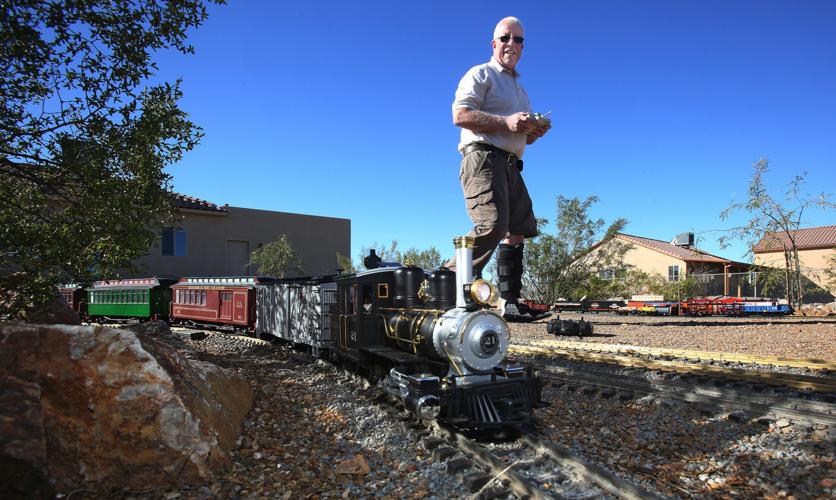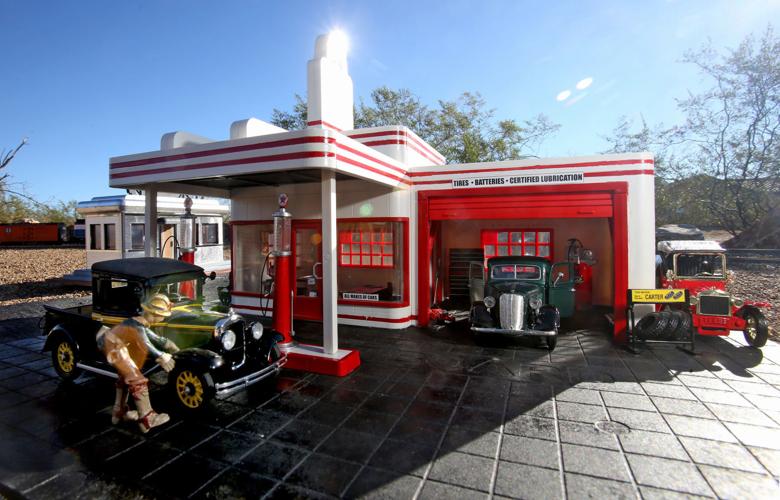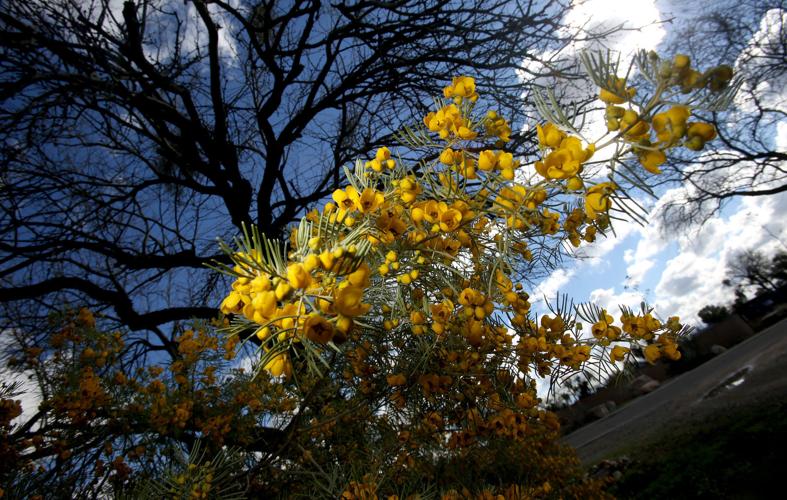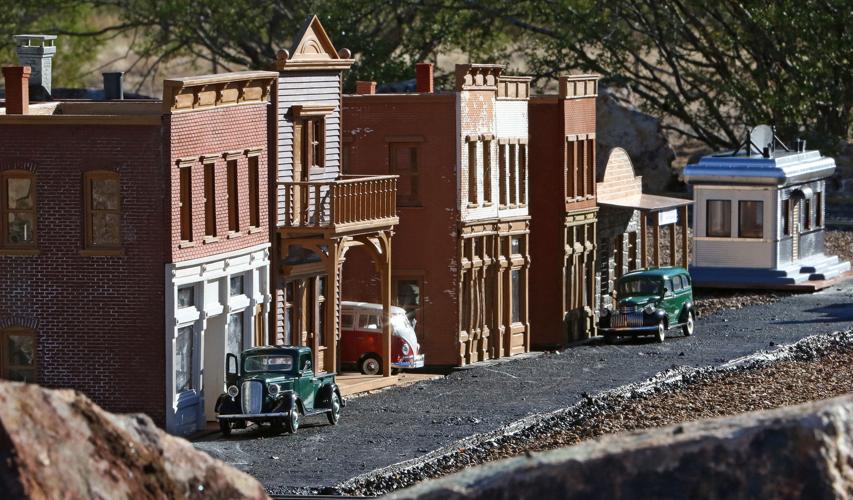Wannabe railroad engineers and magical wizards, listen up. There is a walking tour for you — as well as garden lovers — this month.
Garden railroads
Dennis Mahar may be one of the newer members of the Tucson Garden Railway Society, but he’s an experienced hand in running garden railroads.
His sparse Flathead Junction Railroad on the March 4 and 5 Rails in the Garden 2017 tour is meant to show what a beginning railroad hobbyist can set up in a short amount of time.
His layout, named for the 1937 Ford flathead V-8 engine that sits in his 1923 Ford T-bucket, is his second.
In Encinitas, California, he covered about 500 square feet of backyard with a figure-eight track and waterfall.
Now he uses up more than 1,000 square feet of his southeast-side backyard for two lines of track in an oval shape made a little misshapen by going around a couple of creosote bushes. Cars are pulled by three electric locomotives, including a steam engine that actually belongs to his wife, Carolyn.
There’s a main drag for the beginnings of a small town, an RV in a soon-to-come campground, a train tunnel and a waterfall.
Model cars and trucks from the 1950s and 1960s dot the landscape to show off Mahar’s other hobby — antique cars and street rods.
“I’ve had trains ever since I was a kid: Lionel, HO,” says Mahar, referring to types of model railroads and trains.
A retired San Diego County sheriff’s deputy, he regularly rode real fixed-track vehicles in his law enforcement work for the San Diego Metropolitan Transit System’s trolleys and North County Transit District’s Coaster commuter trains.
Of his two hobbies, he adds, “Guys and cars. Guys and trains. They go together.”
He’s been working on his railroad since August, 2½ years after he and his wife, Carolyn, moved to Tucson. They bought the 1-acre lot specifically to create a spacious railroad.
The couple’s new neighbors helped move and lay 75 pounds of rock and bags of decomposed granite for the layout.
The couple brought from California only the locomotives and some rail cars and wagons, and have been spending time and money getting track, town buildings and train stations.
Carolyn has been trolling stores for plants that will green up the layout as miniature versions of real landscapes. It’s been a challenge compared to the dwarf Alberta spruce she grew with in Encinitas. “In California you can grow everything,” she says.
She’s decided to plant small succulents, myrtle bush, dymondia and thyme in time for the tour. They have all proven to be desert hardy and unattractive to hungry rabbits and other critters.
Dennis Mahar joined the Tucson Garden Railway Society a year before the couple moved to Tucson. He’s enjoyed learning and talking about trains, which keep him busy. “They bring your childhood back,” he says philosophically, “and keeps the child in you.”
Enchanted places
Organizers have tagged the RillitoBend Neighborhood/Valley of the Moon Tour as the “Enchanted Neighborhood Tour.”
That’s because one of the main features of the March 18 event is a tour of the Valley of the Moon, a Tucson Historic Landmark. It’s a child-centric storybook attraction built by George Phar Legler in the 1920s.
The inaugural tour of the rural-like neighborhood on the north side also will feature activities by educators from Desert Archaeology, Do Happy Today and the Tucson Village Farm.
Other enchanting places include a labyrinth, a horse encounter, art show and peeks into homes and gardens.
One of the gardens is the meadow-style landscape of Leslie Eldenburg and John Kovacik. It started with an informal design created by J.D. DiMeglio, the late owner of Horizons West Landscape Contractors, when the couple moved into the home in 1999.
They didn’t realize he had tossed wildflower and vegetable seeds into the same beds, setting the stage for mustard greens and radishes, poppies and daisies to come up in the same space.
“In the wildflower bed the first thing that came up was radishes,” says Eldenburg. “I got a little confused with the poppy because when they first come up they look like a green.”
The homeowners have continued the look, adding Mexican evening primrose, coreopsis, daffodil, rosebush and hollyhock over the years. A lady banksia rose grows up a mesquite tree. Poppy, larkspur, marigold, milk thistle and viola are allowed to flower in the vegetable beds “because it’s pretty,” says Eldenburg.
More edibles have their own area, a “vegetorium,” sort of like a Quonset hut, that protects the plants from critters.
Eldenburg says she hopes visitors on the tour will learn that “your garden doesn’t have to be perfect, but it can still be pretty. I think they will think we are eccentric gardeners.”
“My way of gardening,” she says, “is to see what happens.”











